This blog mostly focuses on the wanderful wild and promotes being outside. Even though most of our articles are about hammock camping, hiking, and backpacking. I feel this series of articles will help just about anyone. poison Ivy is that stuff that doesn’t just live in the woods it’s everywhere. I’ve had some pretty nasty run-ins with it in some flower beds around my house. Seriously?! it thought it was a beautiful flower and wanted to just hang out for a while and spread everywhere. Now I digress so early in the article. It turned out fine for me though cause luckily I’m not allergic to it. Back to what I was saying I am intending this to be helpful to anyone that may potentially and possibly already have run into this nasty little plant poison ivy.
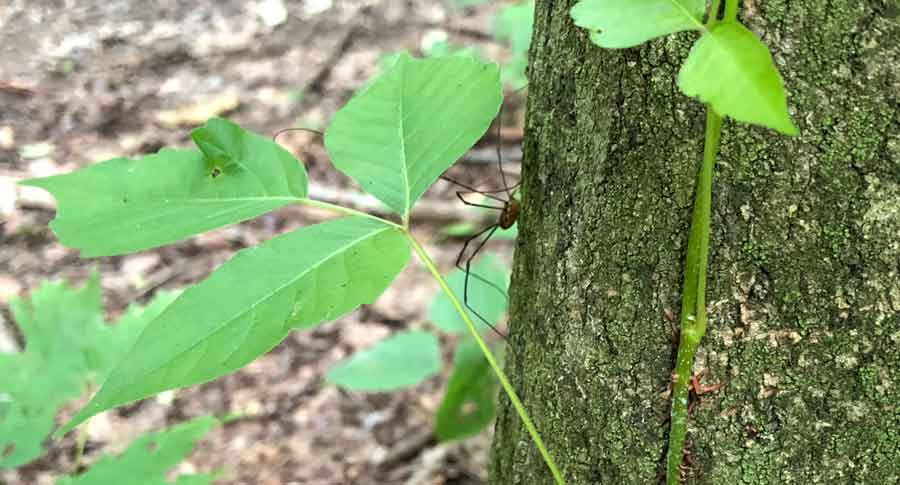
Here is the break down of the series just in case you wanted to skip to one of the other articles
Part One – Identification
This article covers how to identify poison ivy and poison oak. Also helping you understand the different characteristics of the plants. While helping you understand where they grow and don’t grow
Part Two – Cleaning Your Gear
This article talks mainly about when you come in contact with it what you should do about cleaning your gear and keeping it from spreading due to it’s on your clothes and other items that have come into contact with.
Part Three – The Rash and Treatment
This article talks about the rash you can get. Then goes into a variety of ways to help treat the rash and ease some of your sufferings when you have come in contact with poison ivy or poison oak.
Now that you know what the series will cover let’s get into it!
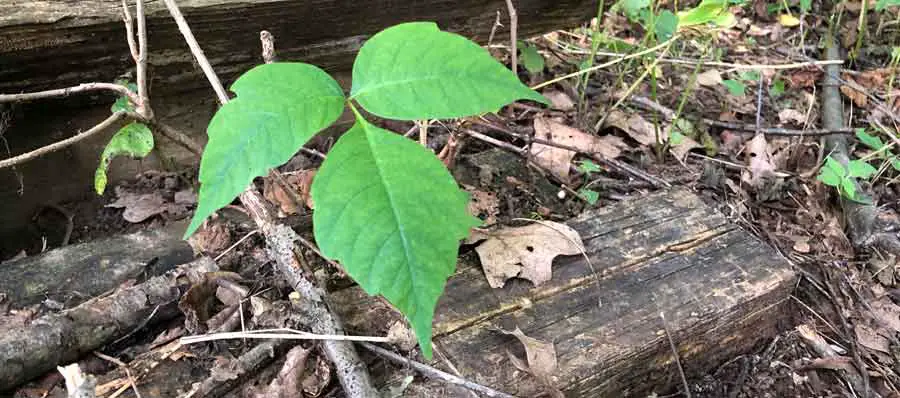
What is Poison Ivy?
Toxicodendron Radicans. Yeah, a pretty big word I honestly just wanted to give the scientific name to make me seem smarter. But seriously poison ivy is that poisonous plant out there in our beautiful woods. It can be anywhere not just the wild. I’m sure you have seen it in your yard or even in your flower beds. This nasty stuff can be found everywhere. So poison ivy is commonly known as the plant with 3 leaves that can give you a rash. You get those rashes due to the oil that the leaves produce called urushiol. Man, I am really making this seem like a super-smart article with all my big words. Urushiol is a very potent oil that can stick to anything. So you have to be careful if you notice you are around it. I would say a large group of people doesn’t get it on them directly from the plant. The oil brushes on something they have on them and then they touch it later and get it.
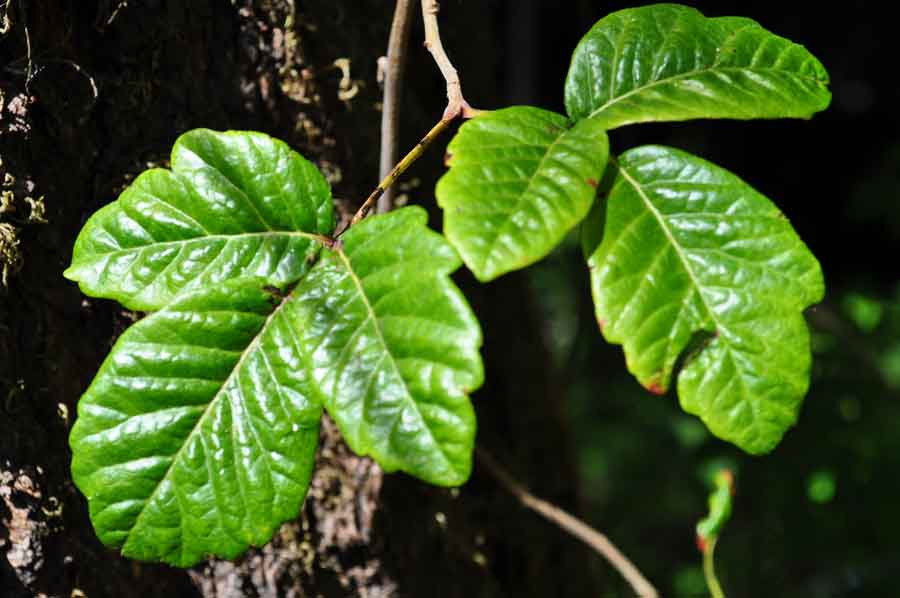
What is Poison Oak?
Toxicodendron diversilobum, (another super science word for you) or commonly named Pacific poison oak or Western Poison Oak, this nasty plant is a woody vine or shrub in the sumac family. This plant thrives in shady and patchy light through full and direct sunlight areas, The plant is found at elevations below 5,000 feet. This is very similar to poison ivy when it comes to where it grows in the woods. The look of it follows the same pattern as poison ivy the leaves have three leaves as well. The one main difference is that poison oak can have more leaves, but it’s not common at all for it to have 5, 7 or 9 leaves. This is rare for it to have more than three but it can happen. That’s why it’s important to understand how to identify it just like poison ivy.
I know my poor mother use to get it all the time when I was a kid. I would be running around in the woods getting that oil all over my jeans. I come home to kick off the jeans in the laundry room and think nothing of it. Then she comes in picks up my jeans off the floor and put it in the washer. Just that action would cause her to have that red rash all over her arms.
This oil is no joke. In looking up more information about poison ivy to write this I found out just a pin drop can cause up to 500 people to itch and get the rash. That’s how potent this oil is.
Why does it make this oil anyway? Great question I was hoping you were going to ask. So a common misconception is that the oil is a defense mechanism to ward off animals. This is false and not true in any way. A fun fact is that poison ivy is only harmful to humans no other animal is allergic to it. Poison ivy produces this oil to help itself to retain water so it can survive. Most times you find poison ivy in half-shaded areas so it does get some direct sunlight. This helps the plant to get the sun it needs and not dry out.
Even though this crummy plant is avoided and hated by humans animals love the stuff. poison Ivy is most commonly eaten by grazing types of woodland creatures. Poison Ivy produces a berry-like fruit and animals like deer eat it up. Surprisingly enough bears also eat this stuff as well. These animals are also a source of how the plant spreads. They eat the berries and don’t digest the seeds. So the animals spread the seeds when they come out of the animal… Yeah.
How to Correctly Identify Poison Ivy
So before we get into anything I think the most important thing about poison ivy is being able to properly identify it. This is honestly more than half the battle. If you can identify it quickly you can stay away from it.
Where it Grows
Poison Ivy & Poison Oak
First, it’s probably pretty important to know where poison ivy and oak grow. You can’t find it everywhere it is only a little shade-tolerant. Shade-tolerant plants are plants that can live in low light. So it’s not typically in the undergrowth of the forest it needs some direct sunlight. Knowing this helps a lot to help identify it. If you are in a super shady area you have a good chance of it not being around. You typically can find it growing where there are openings in the canopy of the woods. It likes to grow on the edge lines of the woods as well. So part of the day it gets some sun and the other part it gets plenty of shade. It can’t tolerate the direct sunlight all day. It would just dry out and die. Knowing this can help you look for it in places you’re about to set up camp or want to hang your hammock.
The Leaves
Poison ivy and poison oak are trifoliate, which is a really fancy science word for “with three leaves” so the first way to identify them is knowing they have three leaves on each stem. The old saying is
“Leaves of Three, Leave Them Be.”
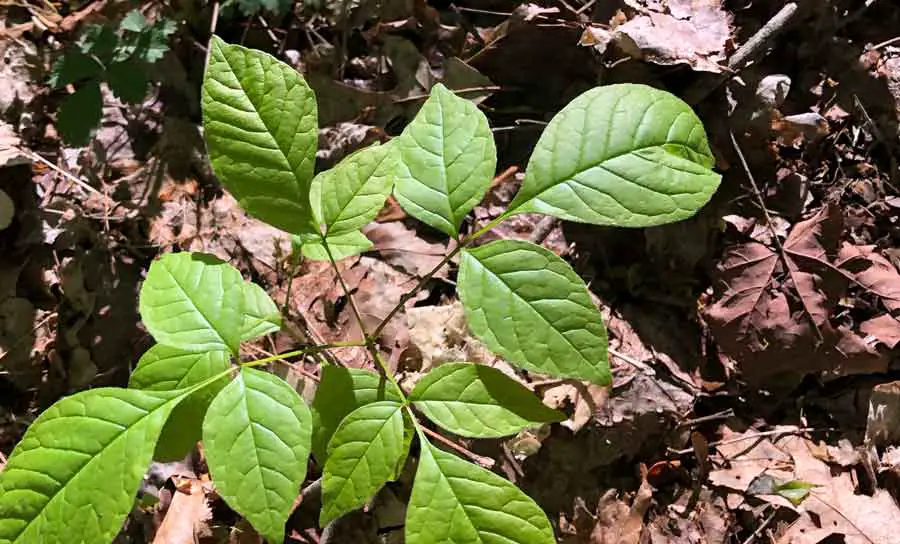
This saying has helped so many people stay away from poison ivy. Unfortunately, there are some other plants out there in the woods that get mistaken for poison ivy as well. That’s why there is another saying that helps too
“Long Middle Stem, Don’t Touch Them!”
I didn’t make these sayings up but they do help. The middle stem of the three leaves is always much longer. The outside leaves are always connected at the same point on the opposite side of the stem. But the stem they are connected to keeps going and a little bit farther is the middle leaf. Know this helps greatly. Another helpful way to identify them is most of the time but not all of the time the stems are a little red where the leaves are attached when it comes to poison ivy.
Now you know the placement of the leaves and the helpful little sayings to go along with them. What about the leaves themselves. This is a little harder due to the fact they range in size and shape just a little. Sometimes but not always (i know I’m saying that too much but it can look so many different ways) the leaves are a little more smooth and shiny than most plants around them that are due to that horrible oil that the leaves are secreting. Poison Oak is easier to identify with just leaves since they look very similar to an oak tree leaf. This sometimes can be the final deciding factor if it has passed all the other test to prove its poison ivy and poison oak. The leaves are typically between two and five inches long. In the spring they can be light green then turn green in the summer. In the fall they are super easy to spot because they turn bright yellow-orange or red. They sometimes look like a fire bush but on the ground or on a tree trunk.
The Vine
So I’ve talked a lot about the plant on the ground but it is ivy. Hence the name poison ivy, so I’ll talk about this part now. This is the part that really affects you hammock camper out there. This is the thing that we hammockers gotta keep a close lookout for. These vines can climb anything but mostly you will find it in the woods growing up trees.
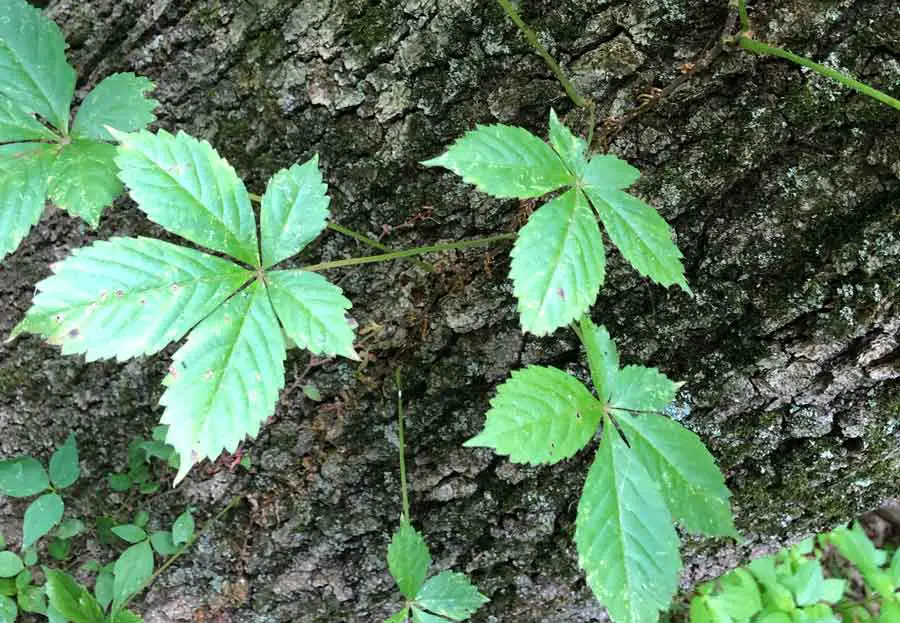
There are other plants that are known to climb up trees as well and you don’t want to confuse them. Virginia Creeper is something that is commonly mistaken as poison ivy when on a tree. This looks very similar but it doesn’t have three leaves it has five leaves on it. Where people sometimes confuse it is when there are new leaves growing on it the three grow faster than the last two leaves so sometimes it has three and there are two little leaves still growing on the back of the grouping. Still if your not sure I would just steer clear of them too but if you do go near it don’t worry its completely harmless.
If you’re unsure about the leaves the best thing to do is look at the tree there is typically a vine going up the tree its a dark brown vine that looks harry. It has a bunch of tendrils growing off it and attaching to the tree these are lighter than the vine in all cases. Don’t know if you can remember. Don’t you worry there is a saying for that too!
Harry Vine, No Friend of Mine!
But that is the more friendly version I was raised with a better saying it goes a little something like this.
Harry Rope, Don’t be a Dope!
Don’t you love those dumb sayings you heard as a kid that sticks with you forever? I still remember the time my dad said that to me for the first time on a camping trip. I had to be like six or seven. Anyway, as long as you remember these dumb little sayings you should be fine.
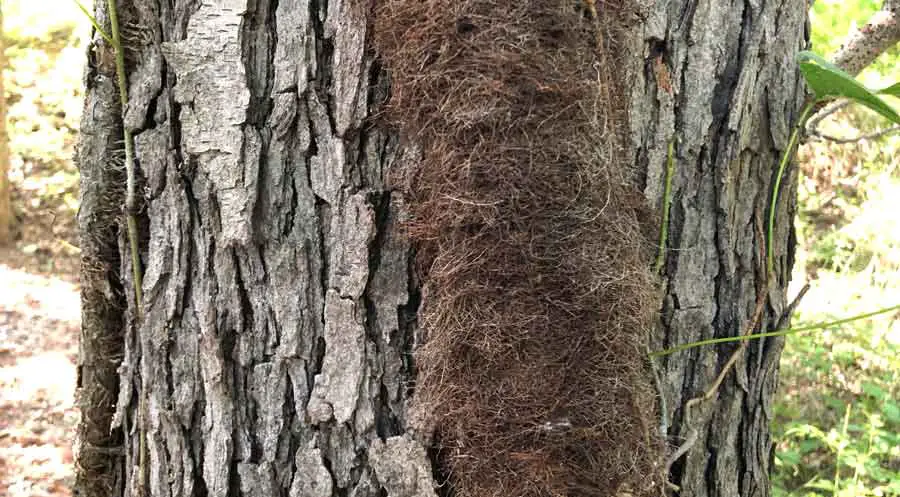
Just know this one thing urushiol is pretty nasty it can stick to anything and last on clothes for years if not removed. Also, urushiol is created in all parts of the plant so no matter what part of the plant you touch you can get the oils on you. So always take precautions when you think you might be around it.
Poison Ivy and Poison Oak are nasty plants it important to understand how to properly identify it you don’t run into this. This is a crucial part of prevention when it comes to poisonous plants. Knowing what they look like can keep you from a world of itching and pain for a few weeks.
Identification Is Key
Now that you know how to identify it the next part of the series is to know if you have come in contact with it click the link to keep reading.
The next part of this series is: Poisonous Plants: Part Two – The Rash & Treatment
I hope you are getting the most of this series my goal is to empower you with the knowledge to prevent any run-ins with these plants. The goal is never to discourage anyone from going outside. The more you know the safer you can be out in The Wanderful Wild.
This blog mostly focuses on the wanderful wild and promotes being outside. Even though most of our articles are about hammock camping, hiking, and backpacking. I feel this series of articles will help just about anyone. poison Ivy is that stuff that doesn’t just live in the woods it’s everywhere. I’ve had some pretty nasty run-ins with it in some flower beds around my house. Seriously?! it thought it was a beautiful flower and wanted to just hang out for a while and spread everywhere. Now I digress so early in the article. It turned out fine for me though cause luckily I’m not allergic to it. Back to what I was saying I am intending this to be helpful to anyone that may potentially and possibly already have run into this nasty little plant poison ivy.
This series will cover all the major areas of those poisonous plants that are out there. Here is the break down of the series just in case you wanted to skip to one of the other articles
Part One – Identification
Part Two – Cleaning Your Gear
Part Three – The Rash and Treatment
I hope you are getting the most of this series my goal is to empower you with the knowledge to prevent any run-ins with these plants. The goal is never to discourage anyone from going outside. The more you know the safer you can be out in The Wanderful Wild.
